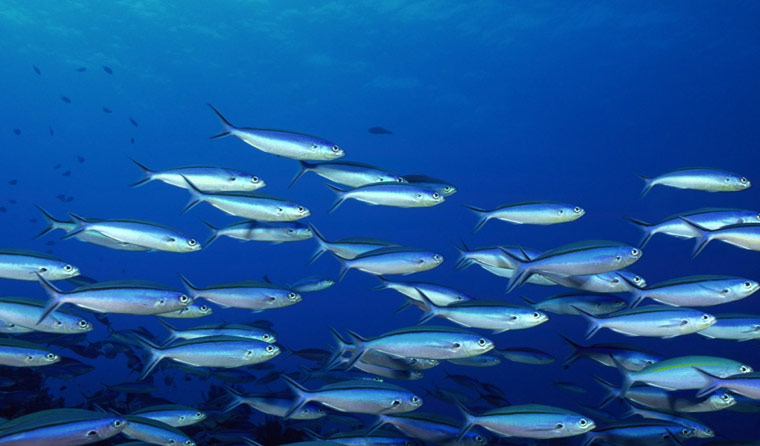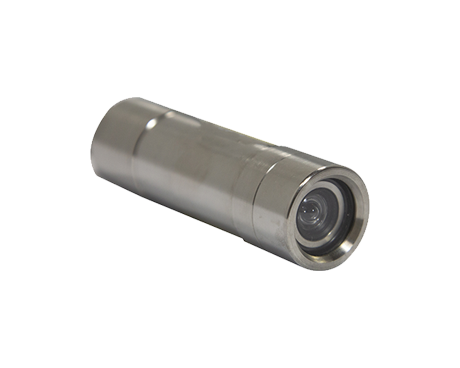
Underwater aquaculture cameras are core tools for monitoring biological growth, water quality changes, and equipment operation in aquaculture. The suitable environments for these cameras must be evaluated from multiple dimensions, including water quality, water temperature, water pressure, light conditions, and the characteristics of the aquaculture scenario. Different models of cameras vary significantly in their environmental tolerance, so selection should be based on specific needs. The following sections explain the key environmental factors and adaptation recommendations for typical scenarios.
I. Key Environmental Factors: Determinants of Stable Equipment Operation
The design of underwater aquaculture cameras must adapt to the unique conditions of aquaculture environments. The following five factors directly affect the service life and monitoring effectiveness of the equipment, making them primary considerations for selection:
1. Water Quality: Adapting to Both "Cleanliness and Corrosiveness"
Water quality is a core factor influencing equipment stability, with a focus on turbidity and corrosiveness:
-
Turbidity (Transparency): Cameras need to adapt to different levels of water visibility. Mainstream models support "clear water with a transparency of 0.5-5 meters" or "slightly turbid water with a transparency of 1-3 meters" (e.g., ponds, reservoirs). Some models equipped with "automatic defogging + high-definition night vision" functions can be used in environments with high plankton levels and low water transparency (down to 0.3 meters), such as high-density shrimp ponds and cage aquaculture. For water bodies containing large amounts of sediment (e.g., estuary aquaculture), specialized cameras with "sediment-proof lens covers" should be selected to prevent lens abrasion or blockage.
-
Corrosiveness (Salinity/Acidity-Alkalinity):
-
Freshwater aquaculture (ponds, lakes, reservoirs): Water salinity < 0.5‰, pH value 6.5-8.5. Ordinary models with "IP68 waterproofing + stainless steel casings" can meet the requirements.
-
Marine aquaculture (cages, tidal flats, industrial aquaculture): Water salinity 20-35‰, high corrosiveness. Specialized models with "titanium alloy casings + anti-marine corrosion coatings" are required, and lens seals should be made of salt-resistant rubber (e.g., fluororubber) to prevent water leakage after long-term immersion.
2. Water Temperature: Matching the Growth Temperature Range of Cultured Organisms
Water temperatures in aquaculture typically range from 0-35℃, and underwater cameras must adapt to temperature fluctuations within this range. Specific requirements are as follows:
-
General Applicable Range: Most models support a storage temperature of -10℃ to 60℃ and an operating temperature of 0℃ to 40℃, covering pond and industrial aquaculture scenarios in temperate and subtropical regions (e.g., grass carp, crucian carp, and white-leg shrimp aquaculture).
-
Extreme Temperature Adaptation:
-
Low-temperature environments (under-ice aquaculture in northern winters): "Low-temperature start-up" models are required, with an operating temperature minimum as low as -5℃ to prevent lens frosting or circuit damage due to freezing.
-
High-temperature environments (summer aquaculture in tropical regions): Water temperatures may exceed 35℃. Models with "high-temperature resistance and heat dissipation design" should be selected to ensure the lens does not fog and the main board does not overheat during long-term operation (e.g., tilapia and grouper aquaculture).
3. Water Pressure: Selecting Pressure Resistance Levels Based on Aquaculture Depth
The pressure resistance of underwater cameras is measured by "water depth". Models should be selected based on the depth of the aquaculture water body to prevent casing deformation or water leakage due to pressure:
-
Shallow water environments (≤5 meters): Such as ponds, shallow tidal flats, and industrial aquaculture tanks. Models with "5-meter pressure resistance" are sufficient. These devices are small in size and light in weight, suitable for fixed installation on tank walls or floating frames.
-
Medium-deep water environments (5-30 meters): Such as offshore cages, deep-water ponds, and reservoirs. Models with "10-30 meter pressure resistance" are required. The casings are usually made of thickened engineering plastic or metal materials, and some models support depth adjustment via cables (e.g., for monitoring salmon and large yellow croaker aquaculture).
-
Deep water environments (>30 meters): Such as deep-sea cages and marine pastures. Specialized "50-100 meter pressure resistance" professional models are required, usually used with remotely operated vehicles (ROVs). These models have higher costs and are suitable for large-scale deep-sea aquaculture scenarios.
4. Light Conditions: Adapting to "Natural Light + Artificial Supplementary Light" Scenarios
Light conditions in aquaculture water bodies vary greatly, and underwater cameras must have corresponding imaging capabilities to ensure clear monitoring during the day, night, or low-light environments:
-
Environments with sufficient natural light (daytime, open-air ponds): Models with "Wide Dynamic Range (WDR)" should be selected to avoid overexposure caused by strong light reflection, while clearly capturing details of underwater organisms (e.g., fish school movement and feeding behavior).
-
Low-light/dark environments (nighttime, deep water, indoor aquaculture tanks): Models with "infrared supplementary light" or "white light supplementary light" are required. Infrared supplementary light models (with a supplementary light distance of 3-10 meters) are suitable for non-intrusive night monitoring (without affecting the biological circadian rhythm). White light supplementary light models (with a supplementary light distance of 2-5 meters) are suitable for scenarios requiring color images (e.g., checking the health status of fish).
5. Biological Interference: Needing Protection Against Attachment and Collision
Organisms in aquaculture water bodies may interfere with the equipment, so models with corresponding protective designs should be selected:
-
Anti-biological Attachment: Organisms such as shellfish and algae tend to attach to the lens, affecting imaging. Models with "regular automatic cleaning" functions (e.g., lens rotation scraping, high-pressure water flushing) can be selected, or the equipment surface can be coated with anti-attachment coatings (e.g., silicone-based coatings). These are suitable for marine cage and shellfish aquaculture scenarios.
-
Anti-biological Collision: Large fish, shrimp, and crabs may collide with the equipment. Models with "impact-resistant casings" should be selected, with casings made of impact-resistant plastic or metal and lenses made of tempered glass. These are suitable for high-density fish aquaculture (e.g., tuna and cod cages).

II. Adaptation Recommendations for Typical Aquaculture Scenarios
Different aquaculture scenarios have distinct environmental characteristics, so underwater cameras should be selected accordingly. The following are adaptation plans for four common scenarios:
1. Freshwater Pond Aquaculture (e.g., Grass Carp, Crucian Carp, Crayfish)
-
Environmental Characteristics: Water depth 1-3 meters, moderately turbid water (transparency 0.5-1.5 meters), water temperature 0-32℃, no strong corrosiveness, and biological interference mainly from algae attachment and crayfish climbing.
-
Suitable Models: Basic models with "5-meter pressure resistance + IP68 waterproofing + stainless steel casings" are recommended. For night monitoring, models with 8-10 meter infrared supplementary light can be used. It is advisable to install the equipment away from aerators (to avoid image shaking caused by water flow impact), with the lens facing the center of the aquaculture area to monitor fish feeding and water quality changes (e.g., whether there is a phenomenon of fish surfacing due to oxygen deficiency).
2. Marine Cage Aquaculture (e.g., Salmon, Grouper, Large Yellow Croaker)
-
Environmental Characteristics: Water depth 5-20 meters, clear water (transparency 2-5 meters), salinity 25-35‰ (high corrosiveness), water temperature 5-28℃, possible equipment shaking caused by wind and waves, and biological interference mainly from algae attachment and fish collision.
-
Suitable Models: Specialized models with "20-meter pressure resistance + titanium alloy casings + anti-marine corrosion coatings" are recommended, equipped with "wide dynamic range + 10-meter infrared supplementary light". At the same time, "anti-shaking brackets" (e.g., buoyancy adjustment devices) should be used to avoid image blurring caused by wind and waves. For aquaculture depths exceeding 10 meters, models with "underwater cable signal amplification" functions should be selected to ensure stable video signal transmission.
3. Industrial Aquaculture (e.g., White-Leg Shrimp, Tilapia, Indoor Seedling Rearing)
-
Environmental Characteristics: Water depth 1-2 meters, clean water (transparency 1-3 meters), controllable water temperature (20-30℃), light mainly from artificial light sources (lights during the day, no light at night), no wind and wave interference, but possible obstacles such as pipelines and aeration equipment.
-
Suitable Models: Compact models with "5-meter pressure resistance + IP68 waterproofing" are recommended, which are easy to install on pipelines or brackets inside aquaculture tanks. For night monitoring, "infrared supplementary light" models are preferred (to avoid white light affecting the circadian rhythm of seedlings). Some models support "POE power supply + network transmission" and can be directly connected to the monitoring system of industrial aquaculture to realize real-time remote viewing.
4. Deep-Water Reservoir/Lake Aquaculture (e.g., Silver Carp, Bighead Carp, Cold-Water Fish)
-
Environmental Characteristics: Water depth 5-30 meters, clear water (transparency 3-5 meters), obvious water temperature stratification (surface layer 0-30℃, deep layer 10-15℃), high water pressure, decreasing light intensity with increasing depth, and little biological interference.
-
Suitable Models: Models with "30-meter pressure resistance + thickened metal casings" are recommended, equipped with "low-light imaging + long-distance infrared supplementary light (10-15 meters)", suitable for monitoring the distribution of fish schools in deep water layers. For mobile monitoring, "underwater winches" can be used to control the equipment to move at different depths via cables. At the same time, "cold-resistant" models should be selected to adapt to the low-temperature environment of deep water layers.
III. Precautions for Environmental Adaptation
-
Test Water Quality Parameters in Advance: Before purchasing, test the salinity, pH value, and turbidity of the aquaculture water body, and select models with corresponding tolerance levels to avoid equipment damage due to water quality mismatch (e.g., using freshwater models in marine environments may cause corrosion and water leakage within 1-2 months).
-
Pay Attention to Interface Protection: Cable interfaces and data interfaces of the equipment are weak points for waterproofing. Select models with "double-sealed interfaces", wrap waterproof tape around the interfaces during installation, and regularly check for water seepage or rust at the interfaces.
-
Regular Maintenance and Cleaning: Regardless of the scenario, clean the lens monthly (to remove attached algae and sediment) and check the integrity of the casing and seals quarterly. Especially in marine aquaculture scenarios, rinse the equipment surface with freshwater to remove salt residues.
-
Adapt to Auxiliary Equipment: Equip auxiliary equipment according to environmental needs, such as "underwater LED supplementary lights" for turbid water bodies, "signal amplifiers" for deep-water environments, and "anti-shaking brackets" for wind and wave environments, to improve monitoring effectiveness and equipment stability.
From the above analysis, it can be concluded that the suitable environments for underwater aquaculture cameras should be determined based on the five key factors of "water quality - water temperature - water pressure - light conditions - biological interference", combined with specific aquaculture scenarios (freshwater/marine, shallow/deep water, open-air/indoor). At the same time, proper post-operation maintenance is essential to ensure long-term stable operation of the equipment and provide accurate monitoring data for aquaculture.
For more information about underwater aquaculture camera, please visit the homepage.

